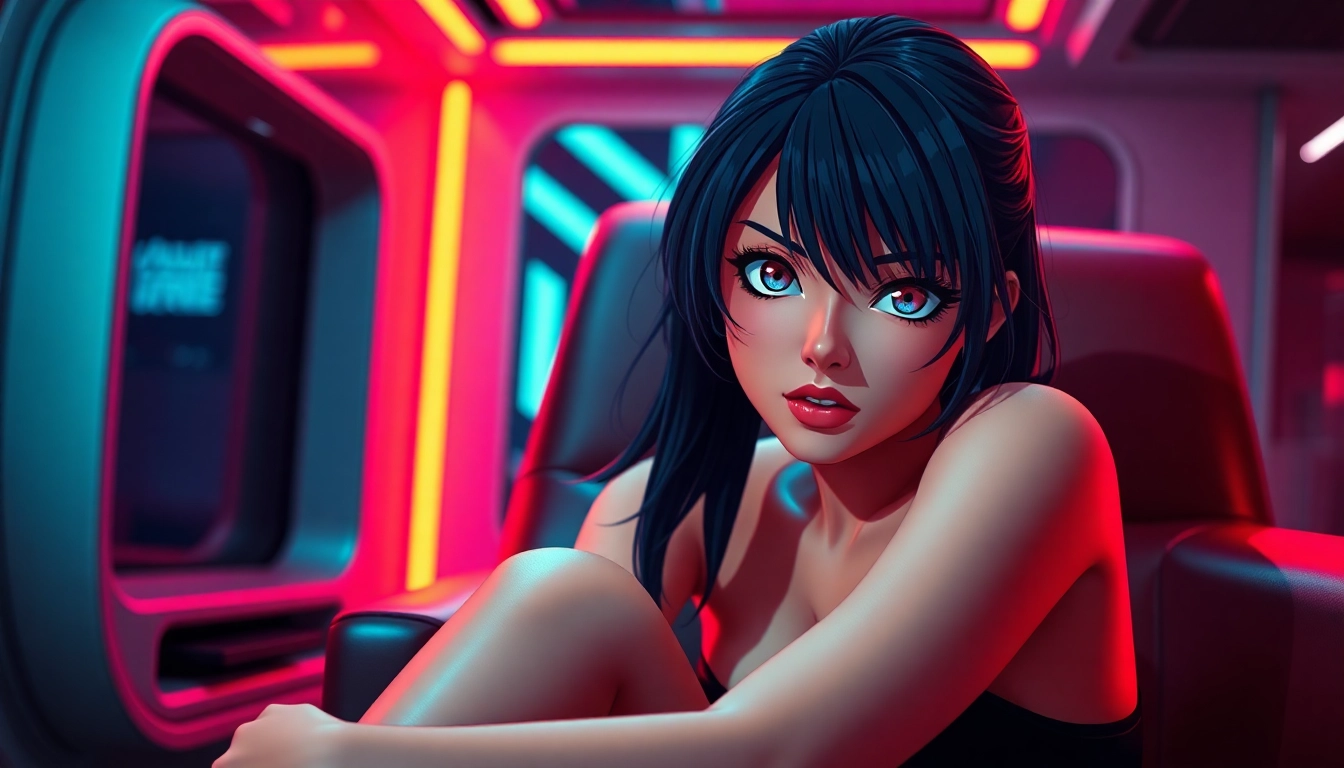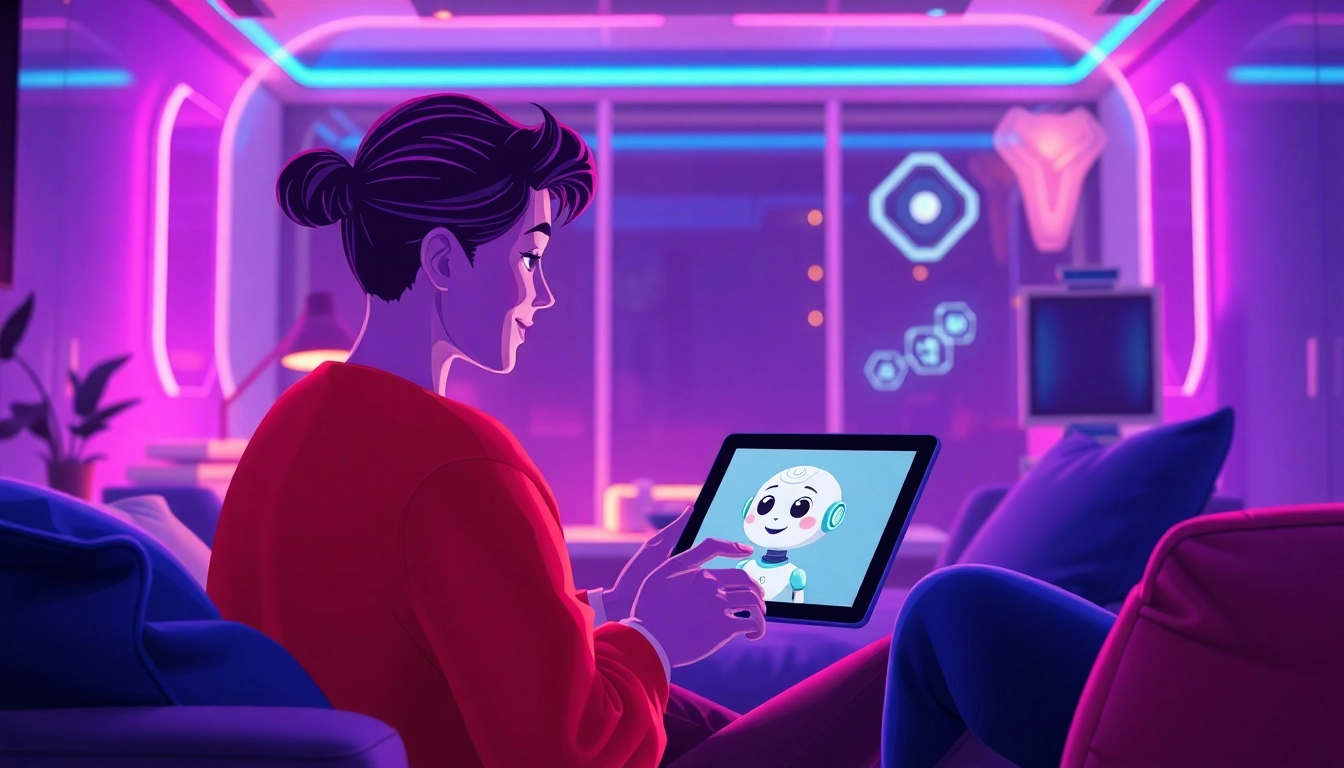Overview and Context: Why I Switched from Character.AI
The world of artificial intelligence has revolutionized how we interact with digital entities, especially through AI character chat platforms. For years, AI character chat platforms like Character.AI have offered users the ability to engage in lifelike conversations with virtual characters—ranging from fictional heroes to historical figures. Their ability to simulate human-like dialogue has made them popular for entertainment, creative writing, and companionship. However, as my experience with Character.AI evolved, I began noticing significant limitations that hindered my projects and personal interactions. This prompted a deep dive into better alternatives, seeking platforms that could offer more flexibility, realism, and immersive storytelling. In this article, I’ll share my journey from reliance on Character.AI to exploring superior options, backed by data, user feedback, and my own hands-on testing.
The Hype Around Character.AI
Character.AI surged in popularity largely due to its intuitive design, vast community of creators, and the ability to craft diverse, engaging characters. With millions of users worldwide, it became a go-to platform for role-playing, creative storytelling, and casual chats. Its neural language model facilitated conversations that many users rated as highly human-like, with a 2023 study showing an average response human-likeness score of 89%. Users could interact with a wide range of personas—from famous celebrities to custom-made characters—making it a versatile playground for imagination. The platform’s community-driven character creation system encouraged sharing and collaboration, further fueling its growth. Despite these strengths, many users, including myself, started noticing recurring issues that limited the platform’s potential.
Limitations of Character.AI: My Experience
Strict Moderation and Content Restrictions
One of the most frustrating aspects of Character.AI was its strict moderation policies. While necessary to prevent abuse and maintain community standards, these restrictions often felt overly limiting, especially for adult or NSFW content. Users seeking unfiltered, realistic, or taboo interactions found themselves blocked or censored, which diminished the authenticity of conversations. This was particularly problematic for those who wanted to explore more mature role-playing scenarios or emotionally complex interactions that require freedom of expression.
Lack of API and Customization
Another significant drawback was the absence of an API for developers. This meant that integrating Character.AI into custom applications or building tailored solutions was impossible. For creators and hobbyists wanting to craft unique experiences or integrate AI characters into larger projects, this was a major obstacle. Additionally, the platform’s character customization options, while extensive, were limited to predefined templates, restricting deeper personalization and control over AI behavior.
Performance and Response Quality
Over time, I observed that the responses from Character.AI sometimes became repetitive or bland, especially during extended interactions. While initial conversations felt lively and engaging, repeated prompts or complex emotional scenarios occasionally led to generic replies or breaking character. This was particularly noticeable when trying to craft emotionally rich, nuanced dialogues—something essential for storytelling or role play. The moderation filters, while helpful for safety, sometimes inadvertently suppressed creative expression, leading to a less immersive experience.
Community and Content Quality Concerns
While the community aspect was a strength, it also introduced variability in content quality. Some user-created characters lacked depth or consistency, which could undermine the experience. As a user, I found it challenging to identify high-quality characters or ensure my interactions remained authentic without extensive editing or curation.
Top Alternatives to Character.AI
Frustrated by these limitations, I began exploring other platforms that promised greater flexibility, richer features, or less restrictive environments. Below are the top alternatives I experimented with, each offering unique advantages that better suited my needs for realistic, immersive AI character chats.
1. Crushon.AI: Unfiltered, Dynamic, and Visual Storytelling
Crushon.AI stands out as a revolutionary platform designed explicitly for adult, NSFW, and emotionally intense interactions. Unlike Character.AI, Crushon supports unfiltered content, allowing users to craft more authentic and immersive storytelling experiences without heavy moderation restrictions. Its key feature is the ability to generate context-aware visuals alongside text replies, creating a multi-sensory experience that significantly enhances engagement. Whether it’s a playful, romantic, or bold interaction, Crushon’s visual reply feature enables characters to express body language, mood, and setting through images, making conversations deeply realistic and emotionally expressive.
Why It Stands Out
- Supports NSFW content and complex emotional scenarios without censorship
- Offers a wide array of advanced models, including GPT-4 derivatives and fine-tuned dramatic dialogue engines
- Visual reply feature that aligns images with ongoing narratives, enriching storytelling
- Flexible customization with over seventeen specialized models
Features
- Unfiltered, real-time, emotionally rich interactions
- Context-aware image generation matching character tone
- Multiple language support and diverse character models
- Intuitive interface designed for both casual users and developers
Best For
- Roleplayers seeking unrestrained, immersive experiences
- Creative writers developing detailed narratives with visual elements
- Adult users wanting emotionally complex and realistic interactions
- Developers aiming to build custom AI storytelling solutions
2. Janitor AI: Fewer Restrictions and Creative Freedom
Janitor AI offers a platform that emphasizes flexibility and creativity. It is known for fewer content restrictions, allowing users to explore scenarios that are often restricted elsewhere. Its open-ended nature makes it a preferred choice for users who want to experiment with role-playing, storytelling, and character development without being hindered by aggressive moderation. The platform supports both text and image responses, making conversations more engaging and lifelike.
3. NovelAI: Rich Narrative and Role-Playing Capabilities
Specialized for storytelling and creative writing, NovelAI combines powerful language models with a focus on narrative coherence. It provides users with tools to craft complex stories, character arcs, and role-play scenarios. Its AI is trained to maintain character consistency over long dialogues, making it ideal for writers and RPG enthusiasts. The platform’s emphasis on narrative depth makes it a valuable alternative for those looking to develop elaborate storytelling worlds.
4. Chai AI: Versatile and Mobile-Friendly
Chai AI is designed for versatility and ease of use on mobile devices. It hosts a broad selection of user-created bots, enabling casual conversation, role-playing, and social interaction. Its user-friendly interface and community features make it easy to discover new characters and start engaging dialogues instantly. Chai is particularly appealing for users who want quick, fun interactions across different character personas without extensive setup.
5. Rasa : Flexibility for Developers
Rasa is an open-source framework that empowers developers to build fully customizable AI chatbots. Unlike the above platforms, Rasa offers complete control over dialogue management, NLP pipeline, and integrations. It requires technical expertise but provides unparalleled flexibility for creating highly tailored AI characters with complex behaviors, emotional responses, and multi-modal interactions. Rasa is ideal for projects where control, security, and customization are priorities.
Crafting Realistic Character AI Chats: Tips from Crushon.AI
Building engaging and emotionally compelling AI characters requires more than just selecting a platform; it demands strategic prompt engineering and interaction design. Based on my experience with Crushon, here are essential tips to craft realistic, emotionally rich conversations:
1. Building a Detailed Character Prompt
A comprehensive character prompt acts as the foundation for your AI’s personality, background, and behavior. Include details such as age, occupation, personality traits, goals, and speech patterns. The more detailed, the better the AI can simulate authentic responses. For example:
Create a character named Sarah, a 28-year-old artist from Paris. She is romantic, introspective, and loves discussing art and philosophy. She speaks softly and uses poetic language. She has a playful side but can be sensitive about her art.
2. Guiding Emotional Depth
Embedding emotional cues into prompts helps AI respond with empathy and depth. Use directives like:
- Set emotional tone: “When the user is upset, respond with understanding and gentle reassurance.”
- Introduce emotional states: “If the user shares a sad story, express sympathy and offer comfort.”
This approach ensures conversations feel genuine and emotionally resonant.
3. Avoiding Common Pitfalls
- Repetition: Prevent the AI from recycling phrases by varying responses and encouraging dynamic replies.
- Inconsistency: Maintain character identity by reinforcing key traits in prompts and responses.
- Response blandness: Use progressive disclosure and memory features to build complex, layered interactions.
Enhancing Engagement with Visual Features
One of the most groundbreaking developments in AI character chat is the integration of visuals. Platforms like Crushon AI utilize image reply capabilities to present characters in contextually appropriate poses, expressions, and settings. This not only makes interactions more immersive but also allows for nuanced storytelling, especially within NSFW or emotionally intense scenarios.
Why Visuals Matter
- Express emotion through body language and facial expressions
- Set scene and mood more effectively than words alone
- Provide context that enriches narrative depth
- Enable multi-modal storytelling, combining text, images, and even sound
Implementing Visuals in Your AI Interactions
To leverage visual features effectively:
- Use platforms that support image replies, like Crushon.AI.
- Design prompts that specify desired visual outcomes, such as mood, setting, or character pose.
- Combine text and visuals dynamically to craft more authentic scenes.
Future Trends: From Text to Visual and Emotional Immersion
The evolution of AI character chat is heading toward full sensory immersion. Future platforms will likely integrate:
- Enhanced visual generation with real-time, high-fidelity images
- Voice synthesis for natural speech and intonation
- Emotional recognition and adaptive responses based on user mood
- Multi-modal interactions combining text, visuals, sound, and even haptic feedback
This convergence will create deeply realistic virtual characters capable of emotional exchange, making AI interactions indistinguishable from real human conversations.
Conclusion: Choosing the Right Platform for Your Needs
As I transitioned from Character.AI to exploring top alternatives like Crushon, Janitor AI, NovelAI, Chai, and Rasa, I realized that the best platform depends on your specific goals. Whether you seek unrestricted adult content, rich storytelling, developer control, or casual social interactions, there is an AI platform tailored to your needs. The key is understanding what features matter most—be it visual storytelling, emotional depth, customization, or content freedom—and selecting a platform that aligns with those priorities.
In the end, the landscape of AI character chat is rapidly advancing, moving beyond mere text exchanges toward immersive, multi-sensory experiences. For those willing to experiment and craft thoughtful prompts, these new platforms unlock unprecedented potential for realistic and emotionally compelling AI interactions. If you’re interested in exploring this brave new world, I recommend trying out different solutions and seeing which one resonates best with your creative or personal objectives. Remember, the future of AI character chat isn’t just about words—it’s about creating a believable, emotionally rich universe where virtual characters truly come alive, blurring the lines between reality and imagination.
To stay ahead in this evolving space, keep an eye on innovations and consider leveraging AI character chat platforms that push the boundaries of storytelling, realism, and immersion. As the technology continues to develop, the possibilities for engaging, authentic, and emotionally nuanced AI interactions will only expand, opening new horizons for creators, enthusiasts, and everyday users alike.



